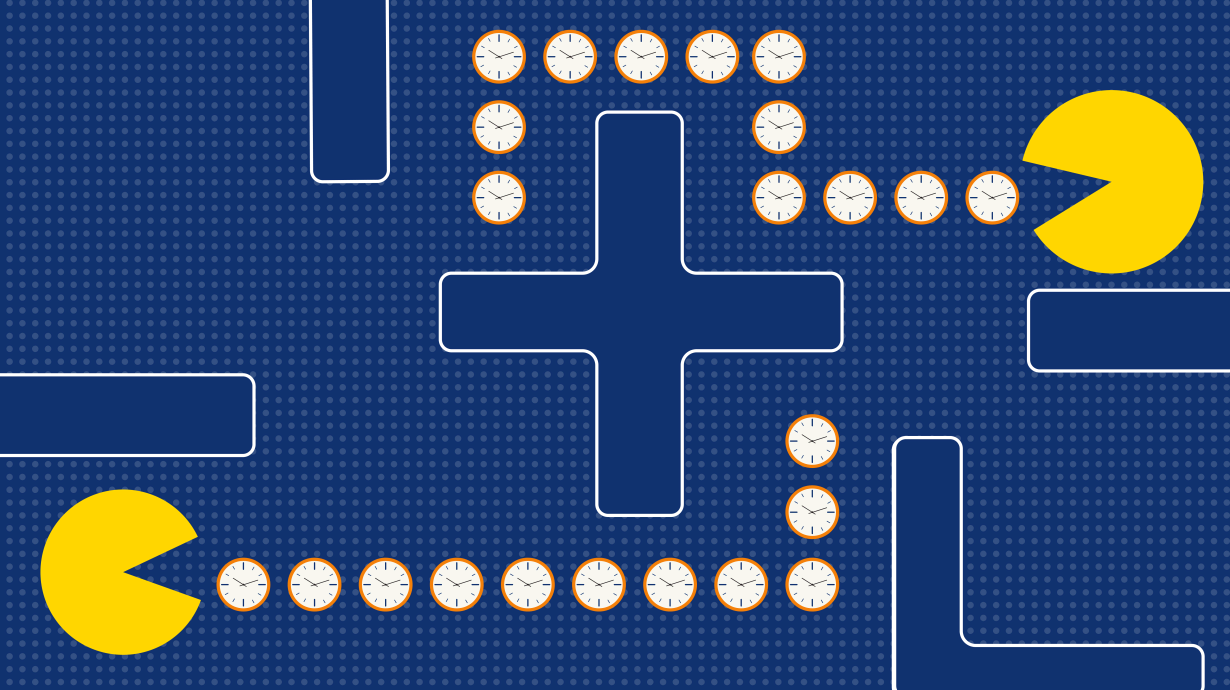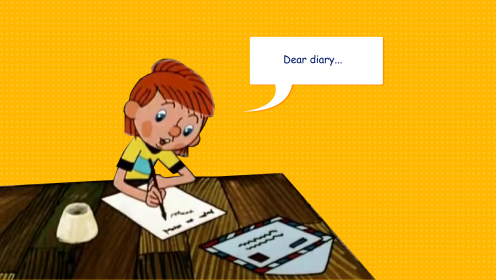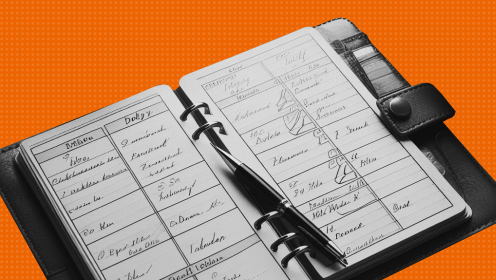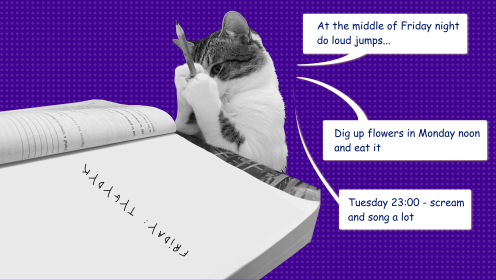Planning is a fundamental aspect of time management, where you organize a jumble of ideas and tasks into a coherent order. However, there are times when the calendar seems to work against you. New circumstances arise, a project demands much more time than anticipated, or deadlines become so overwhelming that you feel tempted to let them slip. In such moments, it might be more effective to set aside your calendar-based plan and adopt a planning approach that better suits your needs.
Enter content-based planning—also called contextual.
📌 Contextual planning involves creating an action plan that is informed by the content and the surrounding context. In other words, when compiling a task list, you take into account the specific conditions required for their completion.
A contextual plan doesn’t replace a calendar plan but rather shifts the focus from the relentless march of time to the circumstances at hand. Context encourages you to focus on what can be done here and now.
Imagine you’re organizing a major event. You have a project brief, a deadline, and a budget—all of which are fixed. But there are also numerous variables—negotiating with speakers, selecting a caterer, and ensuring that the roof at the conference venue doesn’t leak.
So, you draft a task list for the day:
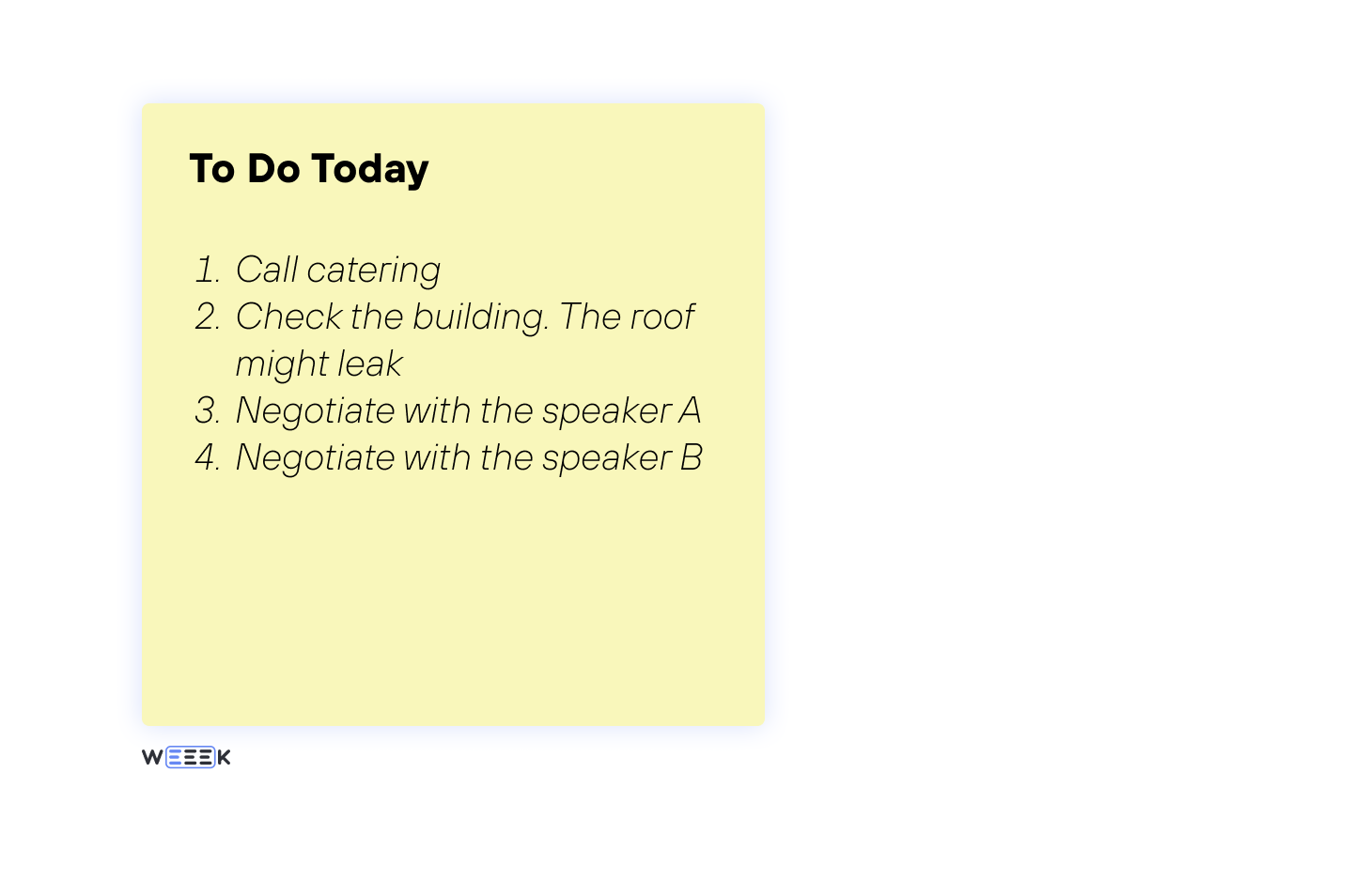
Overall, it’s a solid list. However, you can’t check the roof until you’re physically at the venue. There’s no point in finalizing the catering arrangements until the date is confirmed. And if the speakers back out, it could jeopardize the entire event. This is where context becomes crucial.
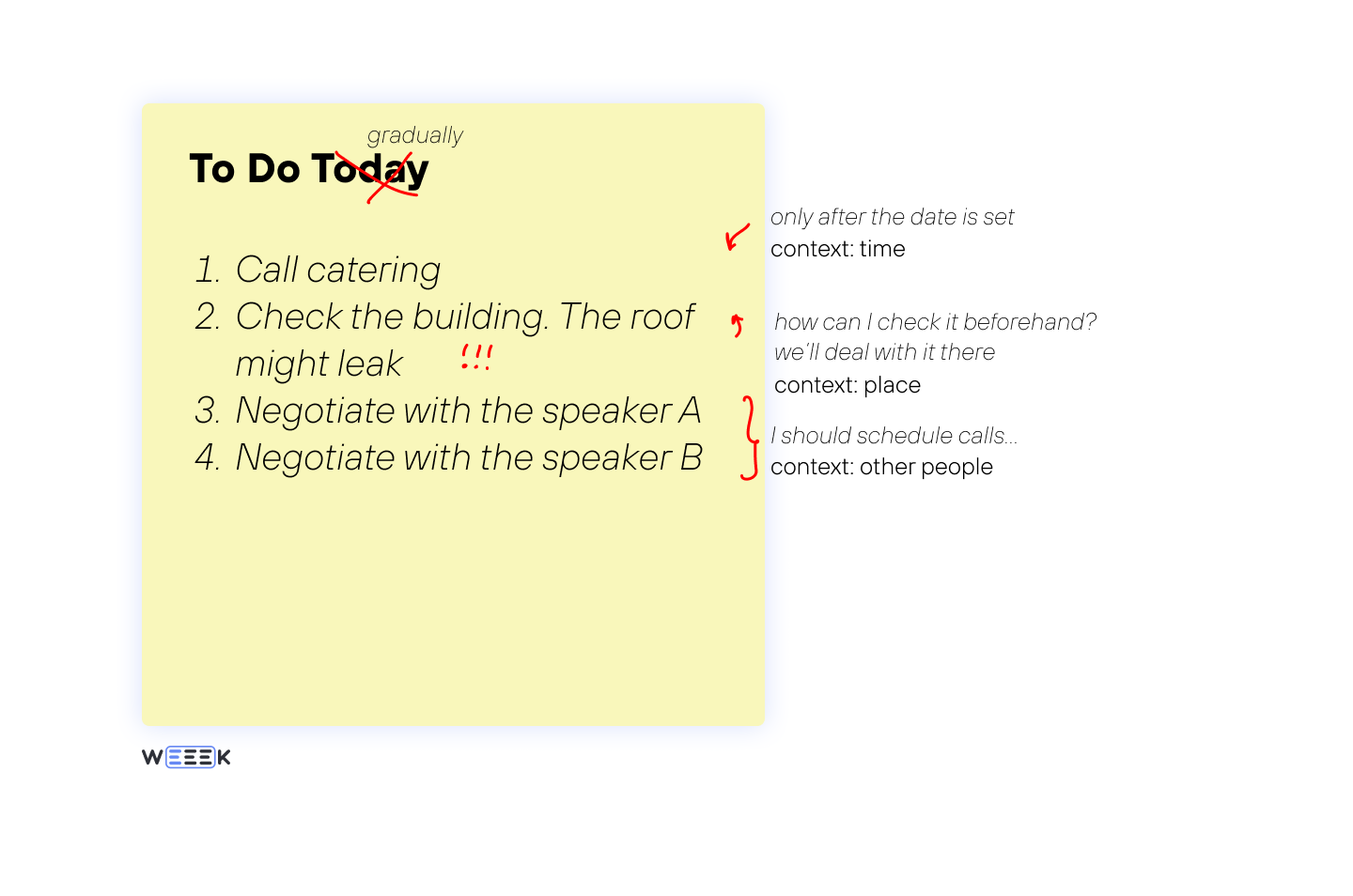
This, in essence, is what contextual planning is all about.
Types of Contexts in Planning
🔷 Places. Whether it's a university or workplace, home or store, office or conference venue—these are the settings that shape the context of your plan.
🔷 People. This encompasses everyone from your boss and colleagues to family members and even your landlord. Each relationship may involve multiple tasks.
🔷 External Factors. The weather outside, your bank balance, or a crucial phone call that’s essential for moving your plan forward.
🔷 Internal Factors. These are likely familiar to you—they include tasks you enjoy or avoid, those you can complete quickly, and those that require more time. As they say, a realistic plan is one that considers your personal tendencies, including any inclination toward procrastination.
🔷 Time as Context. Time itself can serve as a context, such as when plans are aligned with:
- Daily routine. Morning before work, during your commute, on breaks, on the way home, or in the evening at home;
- Time of day. Morning, afternoon, evening, or night (though realistically, what tasks can you accomplish at night besides sleeping?);
- Day of the week. Weekdays versus weekends;
- Month or season. The specific time of year can also play a role in your planning.
Stages of Contextual Planning
Stage 1. Identifying Personal Contexts
Begin by recognizing and assessing the various contexts in your life: the people, places, and events connected to your plans and tasks. These contexts can range from broad categories like "work," "family," or "health" to more specific elements such as particular projects, individuals, or deadlines.
You don’t need to list every context in your life—that would be overwhelming and unnecessary. Instead, focus on identifying and noting the relevant contexts during the planning process, whether you’re organizing tasks for the day, week, or month.
Stage 2. Grouping Tasks by Contexts
Once you’ve outlined your plans for the week, covering areas like leisure, work, and household chores, your contexts might include categories like "Office," "Home," "Boss," and "Cottage".
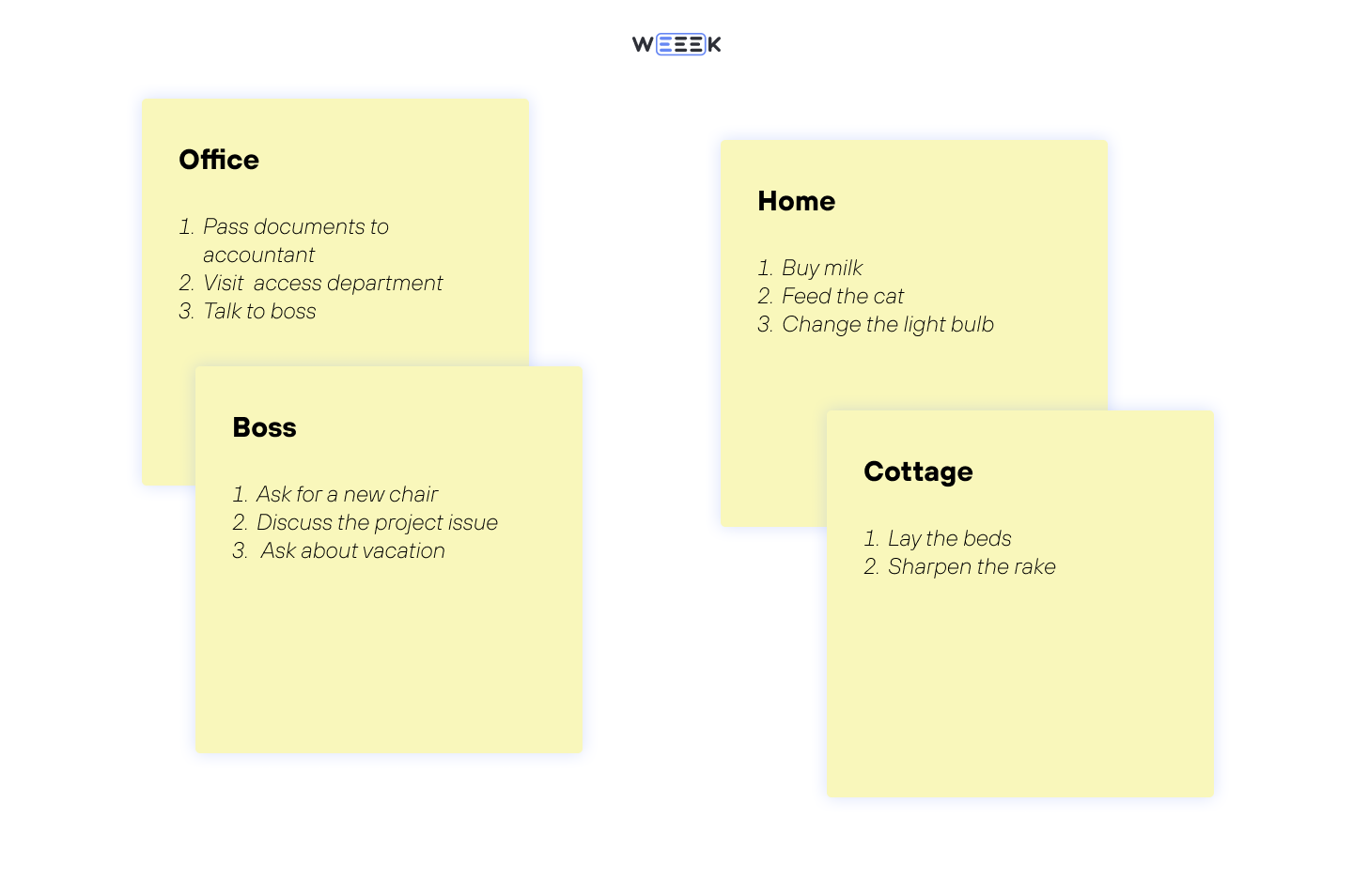
Now, assign your tasks to these contexts without worrying about prioritizing or timing just yet—simply list them. You’ll likely find that tasks naturally group together, as the context itself will suggest what needs to be done.
💡 Contextual planning is much like creating a shopping list, which is, in essence, a form of contextual planning.
Stage 3. Creating a Checklist or Plan
Unlike a shopping list, not all tasks can be completed in any order. You’ll need to prioritize the list and think through the sequence of steps. Within each context group, you’ll start to see which task should come first and which should follow—although this level of detail isn’t necessary for every context.
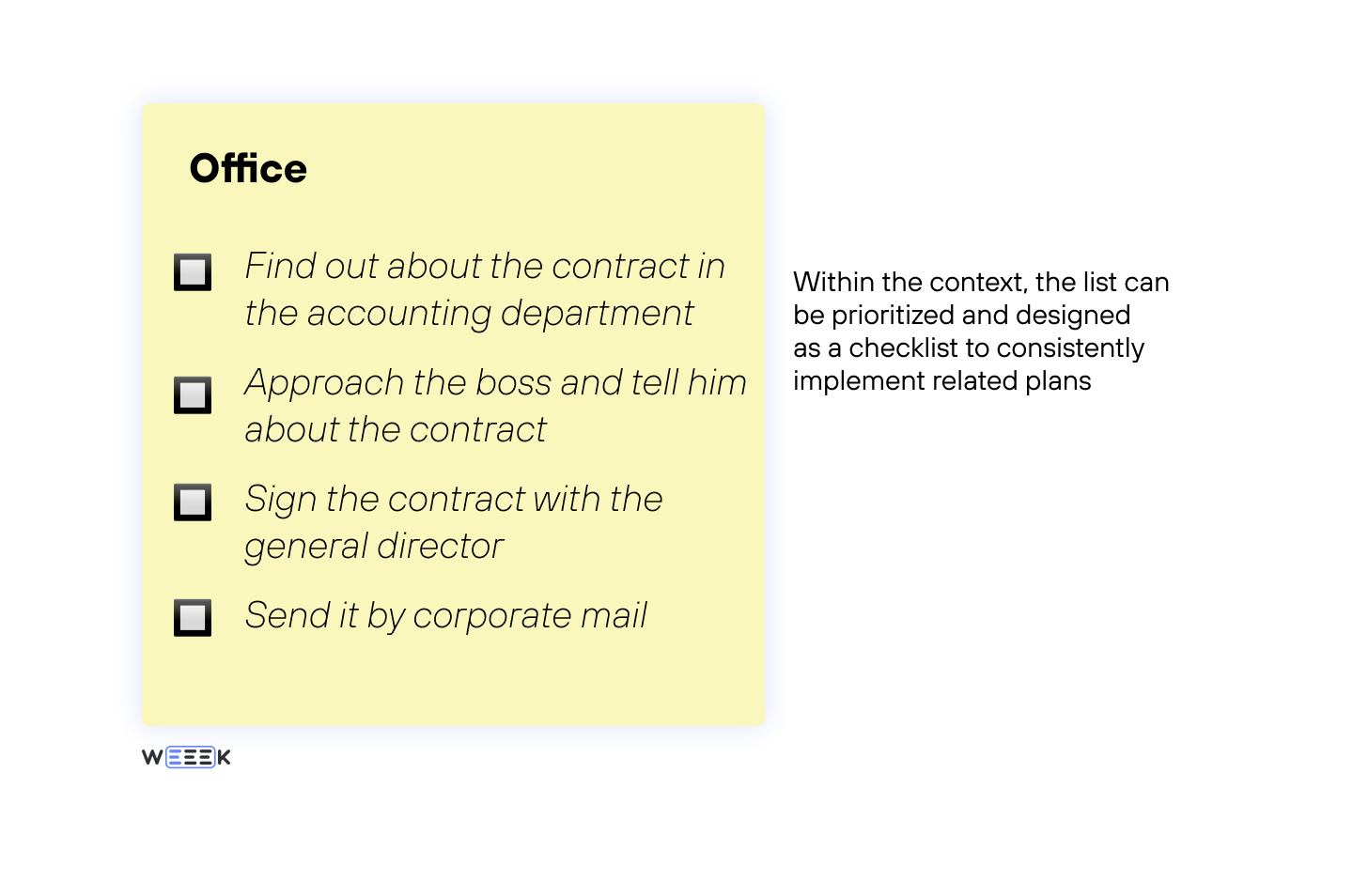
Stage 4. Executing Tasks According to the Current Context
With your plan in place, it’s time to put it into action. A nice aspect of contextual planning is that when you arrive at the office, the tasks associated with that location will naturally come to mind. When you see your boss, you’ll remember you need to discuss that chair. And when you’re at the cottage, the unweeded garden bed will suddenly seem like a priority.
Of course, you don’t need to engage in this detailed planning process every day or for every situation. However, this method can be particularly effective in certain scenarios. For example, making a mental note like "When I get home, I’ll submit the meter readings" can be a small but meaningful win if it helps you stay on top of things!
Tools for Contextual Planning
To complement the contexts you define, you'll need tools to help you create and manage your plans. These tools might include:
🔷 Planner. Whether it's a traditional diary, sticky notes, a whiteboard on the fridge, or notes on your phone, these are ideal for those who plan on the go.
🔷 Board. A dedicated whiteboard or corkboard where you can use sticky notes to represent different contexts. This is an excellent option for visual thinkers or anyone who benefits from seeing everything laid out at a glance for effective planning.
🔷 Task Manager. For contextual planning within projects or team settings, task management tools with calendars, tags, and Kanban boards are particularly effective. These tools allow you to create contexts, organize subtasks, and track progress with checklists.
Contextual Planning in WEEEK
Here’s how you can implement contextual planning in WEEEK:
Option 1: using tags. As you create tasks, assign them tags that correspond to your contexts. Later, you can filter your task list by these tags, giving you a clear view of all tasks related to a specific context. This method is well-suited for both personal planning and project management.
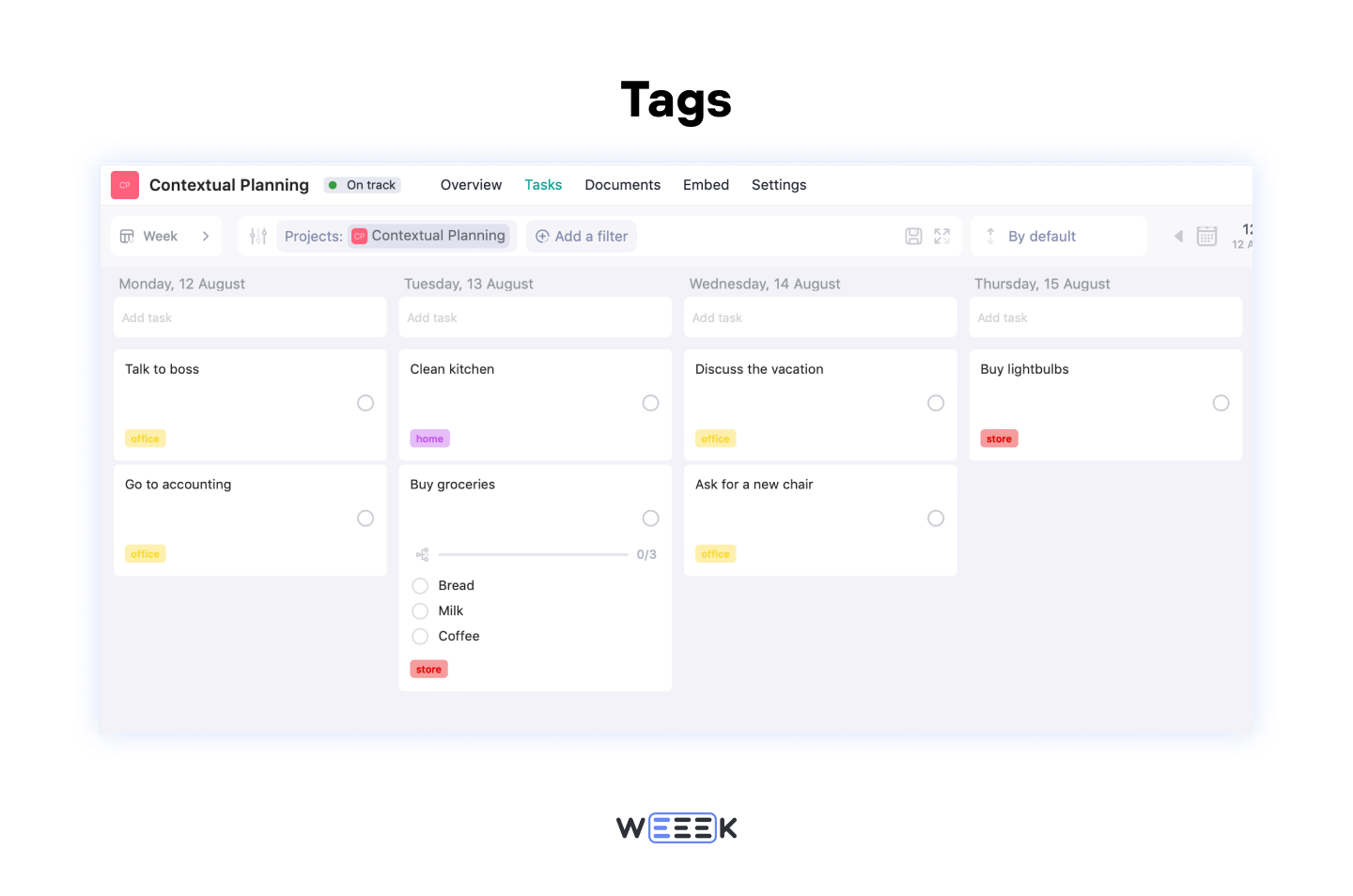
Option 2: using Kanban boards. Organize your contexts into columns, each labeled with the relevant context. Tasks are then added to these columns. This approach works particularly well for personal planning, though it may be less effective for managing larger projects.
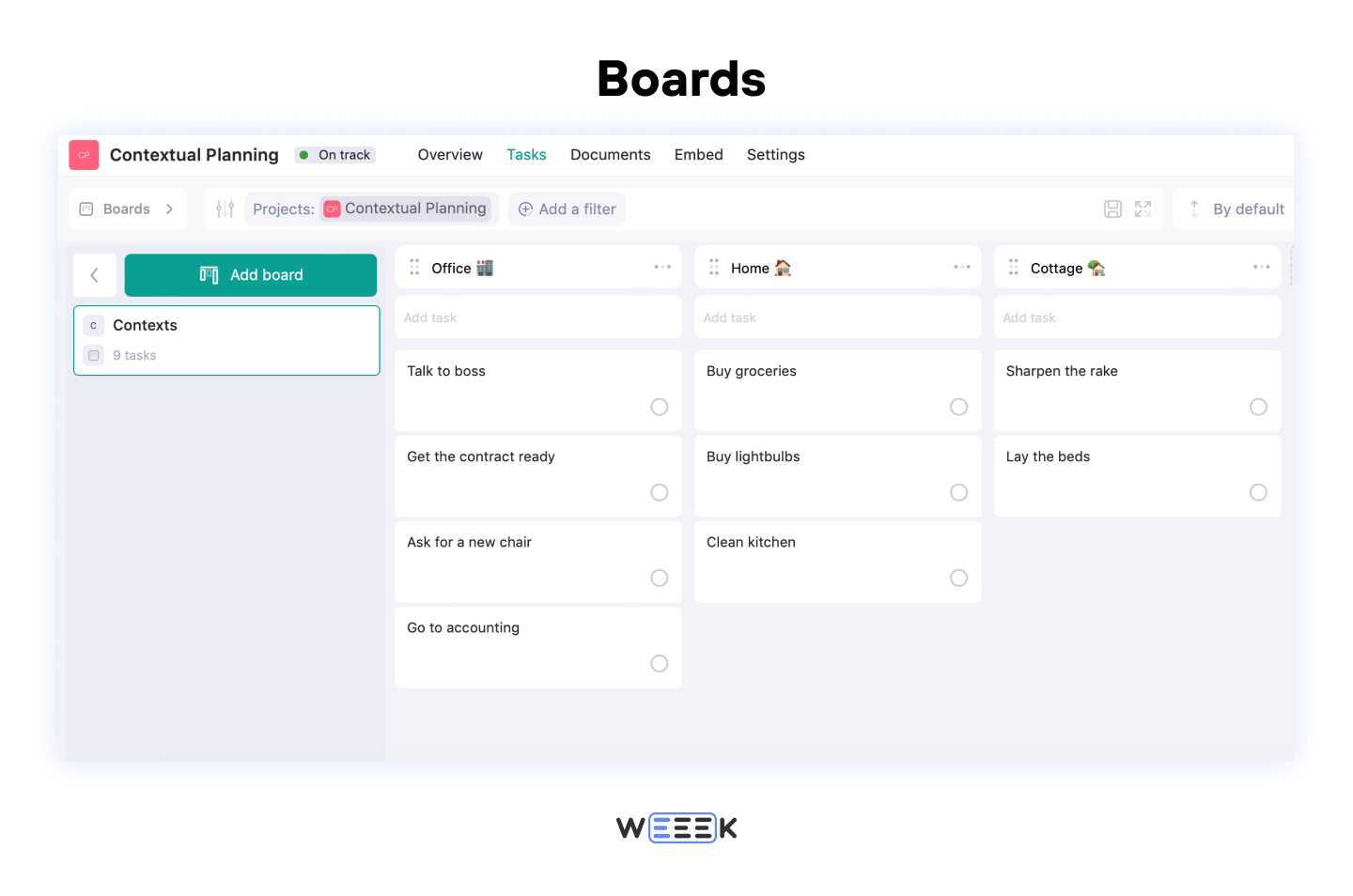
Option 3: using checklists or subtasks. In this approach, the task itself represents the context. For example, you might have a task titled "Office Tasks." Within this task, you can list specific actions as a checklist or within the task description, detailing what needs to be done when that context arises.
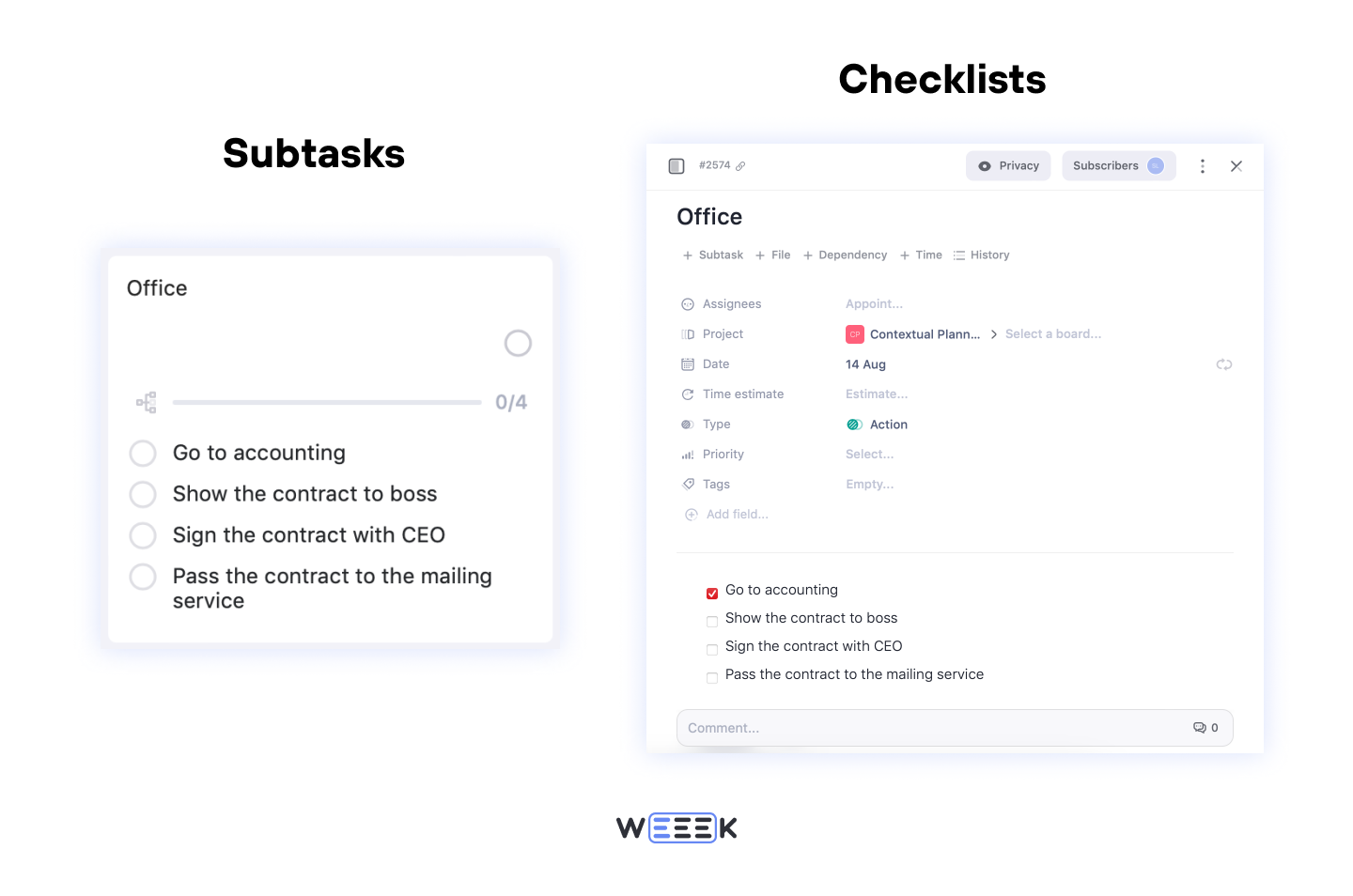
Common Mistakes in Contextual Planning
While contextual planning can be a powerful tool, it can also backfire if not used wisely. Here are some common pitfalls to avoid:
Prioritizing Context Over Urgency
Context is a valuable asset in planning, but it’s important not to let it overshadow deadlines. While household tasks are necessary, they shouldn’t take priority over an approaching deadline on a critical project—no matter how comfortable your home environment may be. Ensure you integrate contextual planning with a calendar and set reminders for key dates.
Failing to Overlap Contexts
Tasks often belong to multiple contexts simultaneously. For example, if you’re renovating your cottage and need to buy paint, it’s smart to include this task in both the "Cottage" and "Shopping" contexts. This principle applies broadly—contexts frequently overlap. If you don’t account for these overlaps during planning, your efficiency could decrease rather than improve.
Losing Balance
Contextual planning can sometimes lure you into focusing too heavily on a single context, especially if it’s more engaging or urgent than others that are more routine. Avoid becoming overly attached to your contextual plan—use it as a tool to organize your tasks, not as a rigid framework.
Summary of Contextual Planning
- Contextual planning is centered around the content and conditions of tasks, rather than strict deadlines
-
Planning by context can often be more straightforward than relying solely on a calendar, as it helps create order. However, it’s crucial not to ignore deadlines completely
-
Contextual planning aids in remembering tasks that need to be addressed when specific conditions arise. For instance, being in a store might remind you that you’re out of milk at home
-
Ultimately, contextual planning is a helpful tool in certain situations, but it’s not necessary to follow it rigidly all the time. The most important thing is to set mental cues and recall tasks when the appropriate circumstances arise









